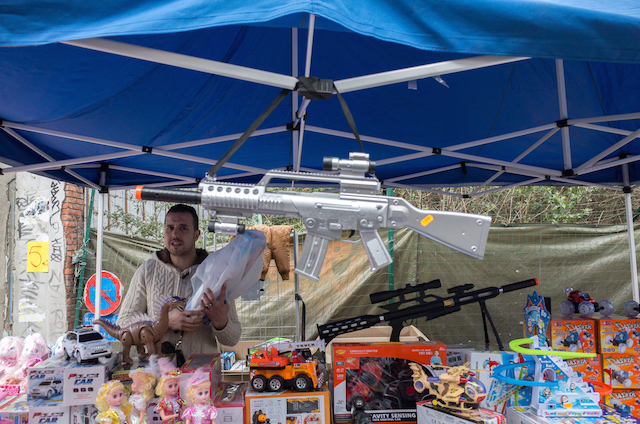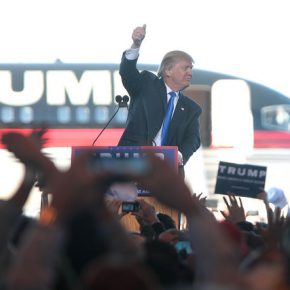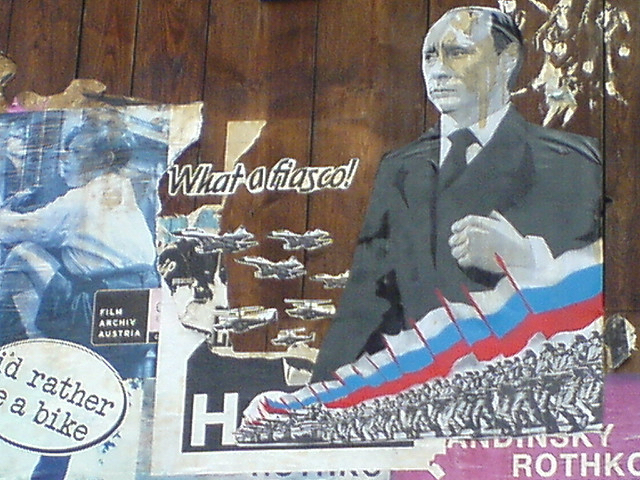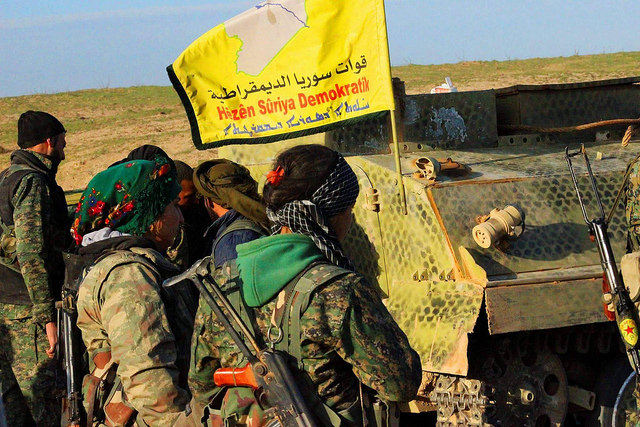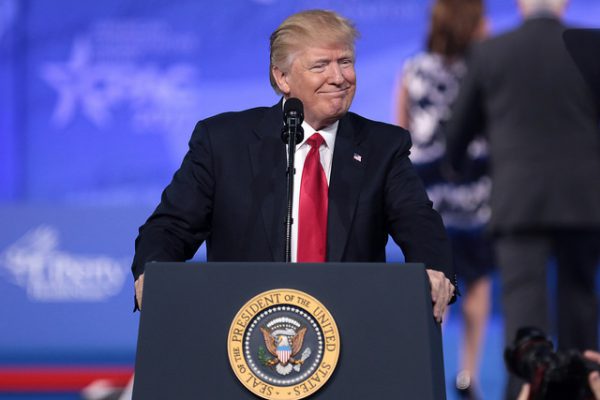It would be difficult to name anything that has so overwhelmingly occupied the American public mind in the last two years as the Sunni terrorist movement that styles itself the Islamic State. From their arrival on the main stage in 2014 when it seized large swathes of territory in western Iraq, to the massacres that followed, the wanton destruction of heritage sites, and the gruesome murders of hostages filmed and broadcast in real time, ISIS has managed to stake out a place of fear and horror equivalent to, or even greater than, that of al-Qaida.
Currently, ISIS represents the state of the art in polycephalus (or if one prefers acephalus) international terrorism. But there is a central disconnect between what ISIS is organizationally and how it is viewed in the United States. This disjunction has significant implications. Having learned little or nothing from the decade and a half spent fighting al-Qaida, US policy makers and military planners insist on approaching the group as they would the Soviet Union or any other territorially bound, bureaucratically stratified entity. Their insistence on doing so is abetted and intensified by the position of ISIS in American public consciousness on a continuum of evil somewhere between Adolf Hitler and Lucifer.
The spectacle of US military intervention in the Middle East is constituted by a multivalent system of relationships among military forces, communications media, and consuming publics. It is a structure of representation the relationship of which to underlying realities is fluid and shifting since it, too, is a site of conflict.
Jean Beaudrillard noted something crucial about an earlier phase of the conflict in the Middle East when he wrote in The Gulf War Did Not Take Place, “the war is also pure and speculative…to the extent that we do not see the real event that it could be or that it would signify.” Anyone who approaches the topic with even a modicum of critical rigor will immediately recognize the gap between the actually existing processes of violence and their media halos. The dynamism of the relationship between the current conflict and the system of signifiers through which it is reproduced in the media of communication is such that drawing firm conclusions about the totality of the processes involved is, so to speak, spectacularly difficult.
Public consciousness and understanding of ISIS in the United States is powerfully shaped by the needs of narratives of America as indomitable force for peace and justice. That these narratives form a self-reinforcing continuity with the longer term narrative that begins with the fight against fascism, continues through the Cold War, and reemerges in the early 21st century against so-called Islamo-fascism. The second half of the 20th century was an era in which the United States was able to engage in conflicts by proxy or by remote control. The conflict in Vietnam was the major deviation from that tendency, and in light of the 210,000 US casualties, the subsequent squeamishness of the American public for hands-on warfare is not hard to understand.
This squeamishness was reaffirmed in the slow-motion catastrophe in Iraq. While things started promisingly with Operation Desert Storm, the subsequent slog, and the intractability of the overlapping regional conflicts in which the United States had involved itself, dictated that the goals of US power had to be pursue by different means. They would be pursued (as so often in the last six decades) by proxy fighters and, in a new twist, via a fleet of drones operated out of Creech AFB in Nevada.

The American public got war the way it wanted it: fought without the stream of flag-draped coffins. And if a large proportion of the people killed by US hellfire missiles were not actually the targets of the strikes (The Intercept reported last year that that proportion was 90 percent) Americans could always rationalize it by saying that people in the vicinty of terrorists were probably bad actors themselves. And if the constant threat of drone attack and the frequent deaths of noncombatants functioned as the most effective recruiting tool for ISIS and its allies, Americans could at least hold on to the hope that we might theoretically kill terrorists faster than we were creating them.
As it stands today, the struggle against ISIS has taken on enormous proportions in the American mind. They are everywhere and nowhere, its message carried along on the data streams of the web along with Netflix, e-commerce, and grumpy cat memes. Hardly a month passes without news of some ISIS commander or other getting vaporized by a Predator drone. The effect of these announcements it intended to be the promotion of the idea that progress is being made. But the command structure of ISIS persists in such a way that the operational effects of killing individual leaders are negligible.
At the same time, there has been a proliferation of attacks carried out by people radicalized by ISIS propaganda, but who received little or no significant operational assistance from the organization. This is the case, for instance, in the most recent cases of domestic terrorism in the United States. Syed Rizwan Farook and Tashfeen Malik apparently traveled to Saudi Arabia at some point several years before murdering 14 people at a Christmas party in San Bernardino, but the primary source of their radicalization (at least so far as the reality based segment of the US security establishment is concerned) seems to have been the Internet.
This essay was begun before the horrific events that took place in Orlando over the weekend. But the massacre itself and the media complex that surrounded it serve to illustrate the points made above. In the wake of the murders committed by Omar Mateen at the Pulse nightclub, the familiar pattern of responses emerged. When asked by CNN what citizens could do in the wake of the latest atrocity, Florida Governor Charlie Crist’s response was, “pray.” It was unclear whether he meant that one should pray that something is done about the ready access of AR-15s to any adult (even those on the FBI’s terror watch list), or that one is somewhere else the next time the (eminently predictable) consequences of this situation ensue.
Donald Trump, the presidential candidate for whom the deranged seem to be the main constituency, repeated his call for a ban on Muslim immigration. Given that Mateen was born in New York, such a ban would have had no effect whatsoever on the case in question. It’s also worth noting that commitment to ISIS seems to have had much less to do with Mateen’s motivations than confusion about his own sexuality. But neither Trump nor his legions of supporters have shown the slightest interest in vetting their ideas for either content or consistency. In fact, Trump may have developed the best understanding of the current situation in the respect that the fluidity of the relationship between actuality and spectacle allows spaces for the creation of one’s own narrative (assuming one has sufficient capital to make it happen).

As early as 2011, al-Qaida was urging potential domestic terrorists to take advantage of the laxity of gun laws in the United States and arm themselves. Who needs the sort of logistical support and planning that went into the 9/11 attacks when the materials needed for a serious atrocity can be had for about $600 by any adult with a driver’s license. The obsessive insistence of the NRA and its enablers in government and the media – that any regulation of access to firearms is unconstitutional – has resulted in a situation in which the tools for the destruction of civilization are ready at hand.
The suggestion (once again emitting from the NRA and amplified by its flunkies) is that the answer to this is for American’s to arm themselves. Sadly, possession of an assault rifle does not make one immune to its effects. More distressingly, they seem not to have understood that the result of this approach would be the reduction of civil society in the United States to the level of packs of gun-toting neurotics nervously eyeing each other as they wait for someone to fire the first shot. Indeed, the America that would result from the realization of the NRA’s dreams seems, in many significant respects, hardly better than the bastardized version of 7th century Islam on offer from ISIS.
With each new event, the American psyche, and the public sphere, are further colonized by the fear of omnipresent terrorism, and by the stereotypical images and origins of its perpetrators. It is the supreme irony of this situation that the greatest proportion of political benefit from this situation is reaped by those whose solutions involve the greatest proportion of irrational bigotry. The relationship between ISIS and their most vitriolic opponents in the world of American politics is one of synergy. It remains to be seen if what’s left of civilization in this country can be rescued from the consequences of the embrace of such strange bedfellows.
Photographs courtesy of Joel Schalit
